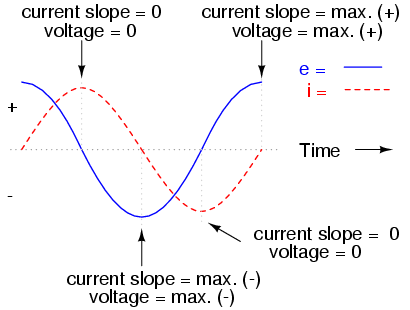Use a mechanical analogy with inertia and see what you come up with. Reactive loads have a lot of electrical inertia. And if you try to stop it, all of a sudden you have voltage (electrical force)!
Imagine a capacitor, for example, as a holding tank. It starts empty (no charge, zero volts), and you start putting charge into it. At the first instant, you have zero volts and non-zero current at the cap itself. As charge "piles up", you get a non-zero voltage at the cap. Likewise, you can discharge it through zero and continue going negative, and at some instant you again have zero voltage and non-zero current at the cap.
Same idea for an inductor, except that the energy is stored in a magnetic field, which you might think of as "stored current", or to continue the mechanical analogy, "inertia". If you really had a superconducting inductor*, then the current could continue forever just like charge/voltage would stay on a perfect capacitor forever.
*All real-world superconducting wires are like this because they only eliminate the resistance. The real-world parasititc inductance is still what it always was.
But in the real world, capacitors leak (imagine a resistor across it), and inductors are made from resistive wire. So some energy is lost through that resistance.
If you model a real-world part with a network of ideal parts, and then only look at the resistances, then by definition, they follow Ohm's law exactly: V=IR
And if you understand complex numbers, you'll find that the reactive ideal components also follow Ohm's law exactly...in the complex domain.
Instead of having a single number "x" to represent some quantity, a complex number is a 2-dimensional vector "a + bi" where i=sqrt(-1). It's a bit odd to think of math working like that, but it does. A bit of trigonometry from there gives you magnitude and phase angle. (a and b are the sides of a right triangle)

